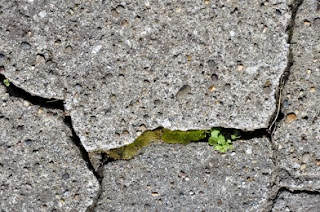One of the nice things about staying with a group of photographers for a week is to discover their personal sources of inspiration. Steve Dunn, who will be the subject of a later blog post, introduced me to Freeman Patterson. Perhaps, I should say re-introduced me to since I did know of his work back in the late 1970's when I was studying photography but it was wonderful to find and re-connect with this amazing photographer again.
His famous book, Photography and the Art of Seeing, is a classic and a must read for any contemplative photographer. Although he doesn't call himself such, looking through his book last week on Monhegan brought so many connections that I felt like I was listening to an old friend. His master's thesis at Columbia in 1962 was Still Photography as a Medium of Religious Expression. This, surely, was a monograph for a contemplative in training.
I love the synchronicity of life. While I was writing this post yesterday as I waited for the ferry to take me back to the mainland, I saw Kim Manley Ort's post on texture and her reference to Freeman Patterson. You can read it here. I love the analogy of texture and community. I had never thought of it in that way before. It is so important to keep your mind open to new influence wherever you are. Revel in the surprising encounters. My week on Monhegan, in the company of other photographers, was both inspiring and enriching and I can't wait to wade through all the images I received there in the weeks ahead.
His famous book, Photography and the Art of Seeing, is a classic and a must read for any contemplative photographer. Although he doesn't call himself such, looking through his book last week on Monhegan brought so many connections that I felt like I was listening to an old friend. His master's thesis at Columbia in 1962 was Still Photography as a Medium of Religious Expression. This, surely, was a monograph for a contemplative in training.
I love the synchronicity of life. While I was writing this post yesterday as I waited for the ferry to take me back to the mainland, I saw Kim Manley Ort's post on texture and her reference to Freeman Patterson. You can read it here. I love the analogy of texture and community. I had never thought of it in that way before. It is so important to keep your mind open to new influence wherever you are. Revel in the surprising encounters. My week on Monhegan, in the company of other photographers, was both inspiring and enriching and I can't wait to wade through all the images I received there in the weeks ahead.
Seeing, in the finest and broadest sense, means
using your senses, you intellect, and your emotions. It means
encountering your subject matter with your whole being. It means looking
beyond the labels of things and discovering the remarkable world around
you.
- Freeman Patterson







































